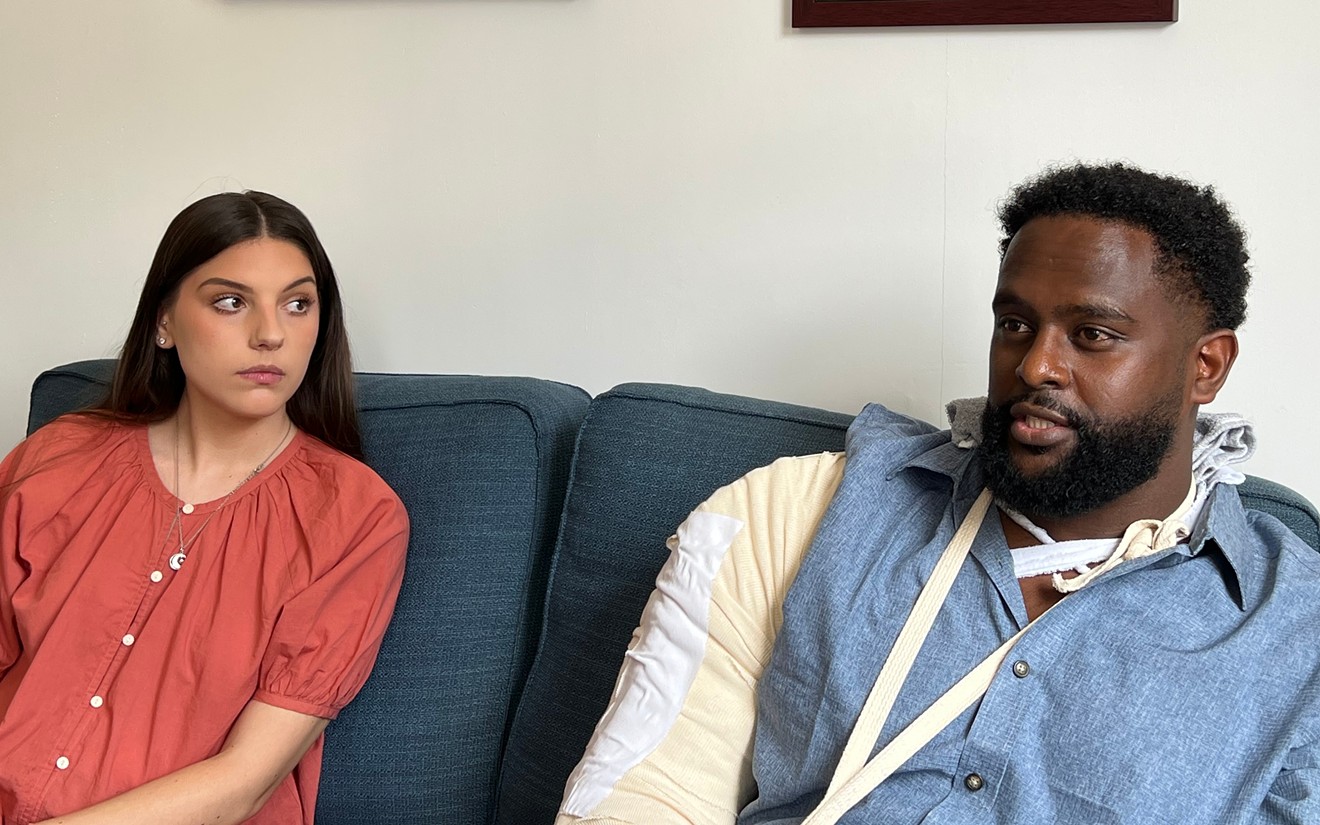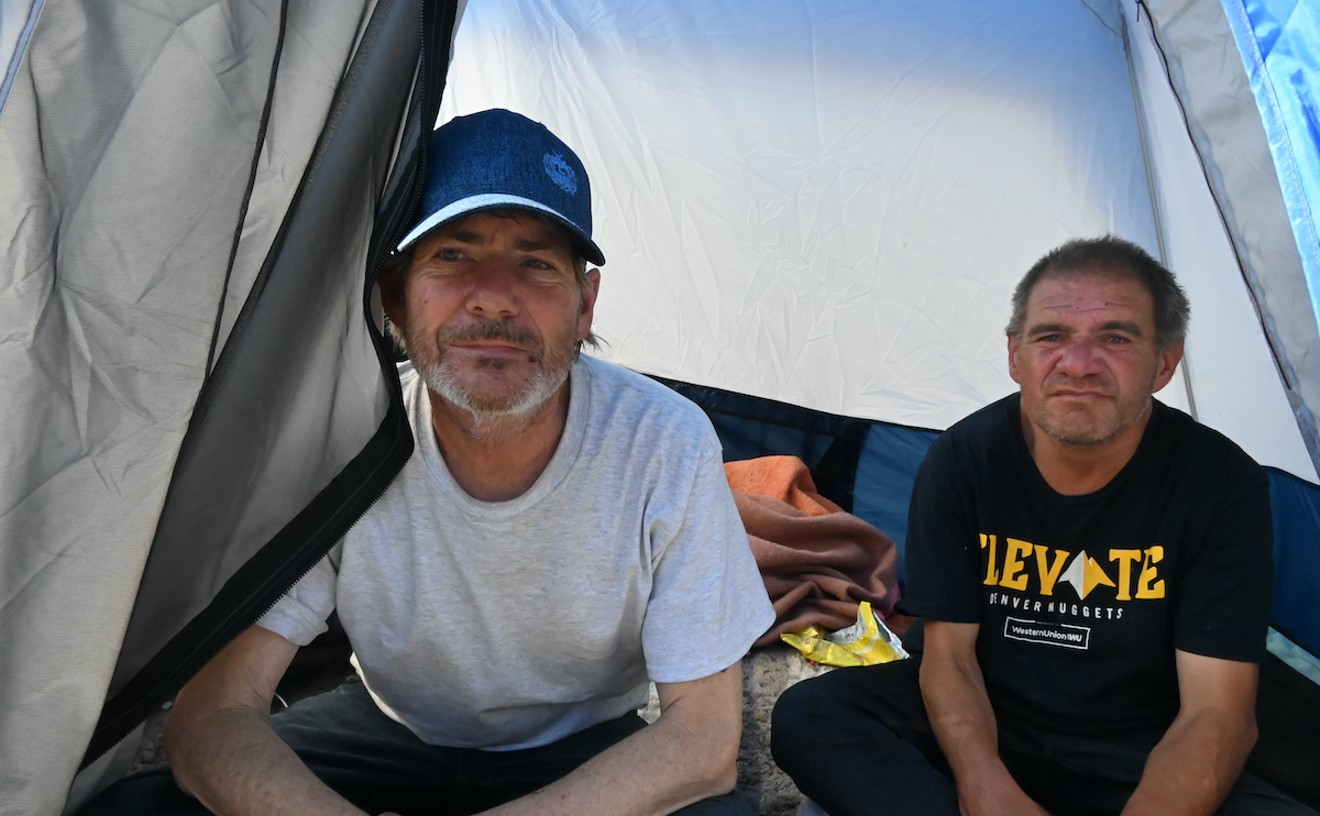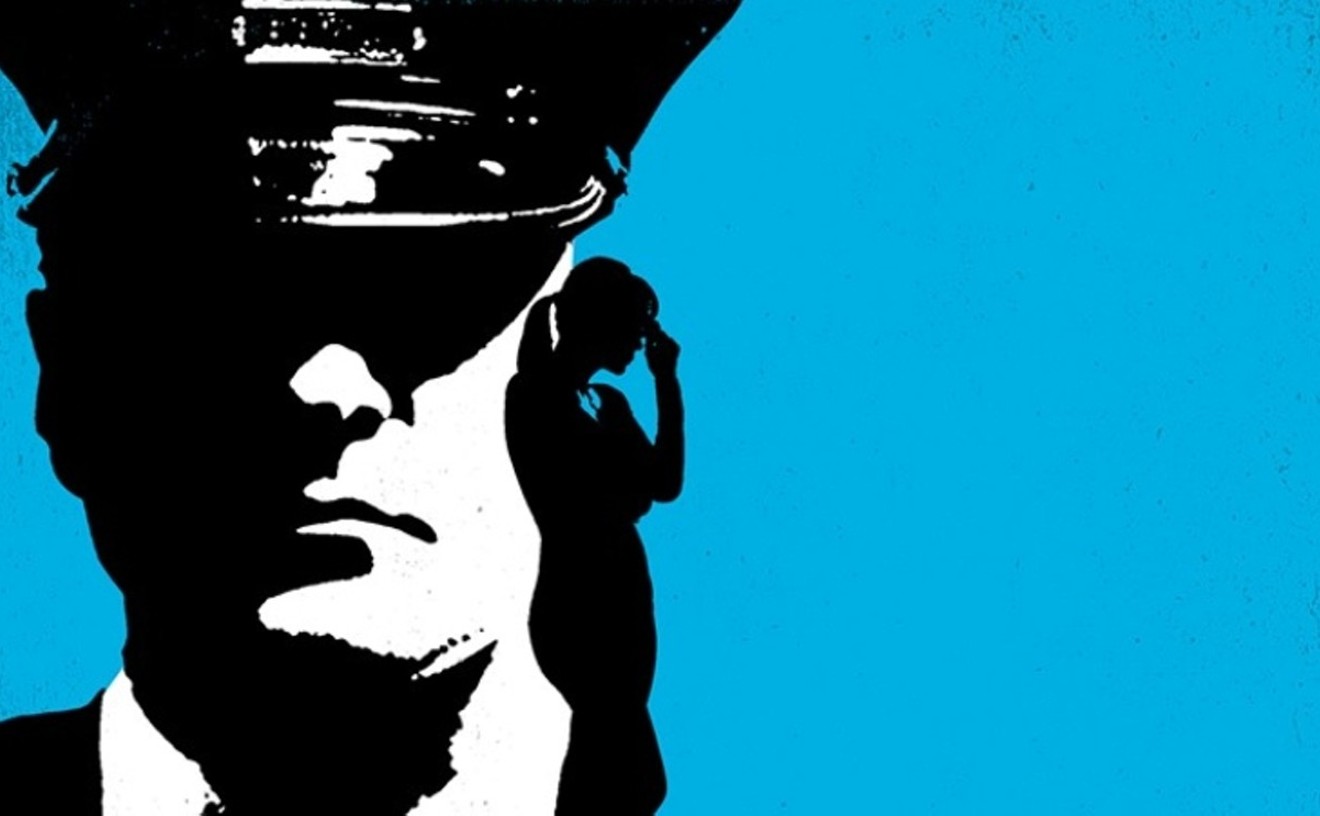The Denver Police Department staged a marathon press conference on July 20 to share what was termed "preliminary information" about three officer-involved shootings over a five-day period. But the one that grabbed the most attention was the July 17 incident in which seven people were shot or injured: 21-year-old suspect Jordan Waddy and six bystanders caught in the crossfire near the Larimer Beer Hall, at 2012 Larimer Street.
Bailey Alexander was shot in the shoulder from behind, and Yekalo Weldehiwet still has a bullet inside his arm. Both are reeling from what happened to them, and confused about why they learned they were victims of "friendly fire" from media coverage rather than the DPD.
"I was shocked to hear it was a police officer," says Alexander, speaking from the offices of Rathod Mohamedbhai LLC, the Denver-based law firm that represents her and Weldehiwet. "I was pretty frustrated that I found out through the news that it was a police officer and nobody else."
Weldehiwet adds: "The next day, when the reports came out, that's when I understood it wasn't actually the suspect who fired, but the police. And I had a lot of questions as to why the police would be part of a mass shooting near a crowd full of people after all the training they've completed."

Commander Matt Clark displaying a screen capture of suspect Jordan Waddy from body-worn camera footage taken during the July 17 incident. The red circle highlights the weapon in Waddy's possession.
Denver Police Department via YouTube
If Clark was trying to cushion any potential blows related to the third shooting by emphasizing how well law enforcement officials had handled the first two, it didn't work.
According to Clark, at around 1:30 a.m. on July 17, officers were already in the area of the 2000 block of Larimer Street as part of an assignment to monitor let-out at the bars when they noticed an altercation between an unnamed man and Waddy, who appeared to be armed. Clark said the cops flickered their flashlights and announced their presence in an attempt to calm the situation. At that point, Waddy reportedly walked through a crowd gathered around a food truck, and when he passed between the far end of the vehicle and a parked car, he was ordered to stop. "He was clearly away from the crowd, and the street was closed due to the out-crowd, so no traffic was in jeopardy," Clark stressed.
Instead of complying with orders, Clark continued, Waddy tried to remove a handgun from the hoodie he was wearing, and while he was holding the weapon by the slide rather than in a pistol grip when he finally managed to extract it, the muzzle crossed in front of two officers, prompting them to begin firing. One shot two rounds, the other four, and Clark maintained that because Waddy's backdrop was the Larimer Beer Hall itself, no one was in their line of fire. That wasn't true for a third officer, who shot a single round from another angle, but Clark said that he was careful to make sure the sight path to the suspect was clear.
Nonetheless, six people other than Waddy, who remains hospitalized, were wounded in the melee — five located shortly after the shooting ended and a sixth who came forward a couple of days later to say he'd suffered what Clark characterized as a minor injury to his chest.
During a question-and-answer session, Clark didn't say definitively that the officers' actions were justified, confirming that determination would be made by outside agencies conducting the inquiry. But he repeatedly underscored the three officers' safety efforts and noted that the DPD is routinely able to disarm people without endangering the public. This tone was reinforced by Denver Police Chief Paul Pazen, who was coaxed to the podium near the end of the presentation. After expressing compassion for the injured bystanders, he said that each of the three incidents was caused by suspects, not his officers, and decried the prevalence of illegal guns like the one packed by Waddy, a prior felon on parole.
The briefing included screen captures from various officers' body-worn cameras, and Clark promised that the complete footage would be released as soon as the Denver District Attorney's Office finishes its review. (See the press conference below.)
None of those who were injured were at the press conference, but some are now sharing their own stories.
"I was bar-hopping with friends downtown, and we finished the night off at the Beer Hall," says Alexander, an oral surgery assistant. "We closed the bar down, and as we were leaving, we went just a few feet away to the food truck. We were standing there for maybe a minute, two minutes, when all of a sudden, I heard a gunshot and quickly realized that I had been shot in the back side of my shoulder."
Her boyfriend "grabbed me, kind of picked me up and helped me down the parking lot next to the Beer Hall and into an alleyway," she continues. "I think somebody had called 911 as we passed them. Two women were in the alleyway, and they helped me with my wounds — held pressure to my back and put a kind of a tourniquet onto my right arm. And we waited there until the ambulance came."
No DPD personnel spoke with Alexander until after she'd arrived at a nearby hospital. She says she didn't specifically ask the officers who had shot her because "I assumed it was the suspect, and they gave zero indication that it was anybody other than the suspect."
Before the shooting, she had noticed "a commotion between two males," she recalls, but she hadn't spotted any police officers — a somewhat uncommon occurrence. "I am regularly in that downtown area, and when we go to the Beer Hall, we close out the night at the food truck — and I see police officers on quite a few of the corners. It always seemed like a pretty safe environment to be in."
Alexander isn't sure that she feels that way anymore. She remains in considerable pain, and the wound at the spot where the bullet passed through continues to limit her range of movement.
"I have no idea how, emotionally, I would be in that area now," she acknowledges. "These last few days have been a complete whirlwind, and it's hard to even think about how I feel about things. I definitely don't believe I've wrapped my head completely around it, and I'm definitely looking for more answers."

Photos of the wounds suffered by Bailey Alexander and Yekalo Weldehiwet.
Courtesy of Rathod Mohamedbhai LLC
Medical assistance was far from immediate. "There were police on the scene, and they kind of ripped my shirt to see where the wound was," he recalls. "But we waited for thirty minutes or so for the ambulance while I was laying down, not moving." Two other victims accompanied him on the ride to the hospital — "a woman who'd been shot in the leg and another woman whose leg was kind of grazed — but there was a lot of bleeding."
He continues: "The bullet entered the back of my bicep and completely shattered my humerus bone. The bullet's still in there as we speak; the doctors are talking about surgery and if it would be beneficial to the healing process if they left it in there. But my job requires me to use both of my hands to type, and I would need a speedy recovery to start working again."
Like Alexander, Weldehiwet was interviewed by DPD personnel at the hospital, "and I did ask them if they found the suspect, and they kind of made it seem like it wasn't the police who'd shot me but the suspect — at least that's how I understood it," he says. They took no photos of his injuries; Alexander says they didn't take pictures of her, either.
Weldehiwet had considered the downtown entertainment district "a safe place to go, because I hadn't heard about any incidents," he says. "But after this, I don't feel safe. I don't even know if I feel safe being around the Denver Police Department, to be honest with you. I'm barely averaging three hours of sleep at night, and I've been having breathing difficulties. My fiancée is a nurse, so she's been taking care of me very well. But it's been a traumatic experience mentally and physically."
Rathod Mohamedbhai attorney Siddhartha Rathod is highly critical of the DPD actions that resulted in injuries to innocent bystanders, as well as the spin the department put on the event during the July 20 press conference.
"When it comes to dangerous situations involving officers, officers shouldn't focus on protecting and serving themselves rather than protecting and serving the community," he says. "Six members of the community being shot or injured by police while simply trying to go home is not acceptable, and it's not acceptable to look at the public as collateral damage."
In his opinion, "What Denver's saying doesn't make sense" — especially the idea that only a single shot was fired at Waddy with anyone nearby. "One bullet did not hit six individuals. One bullet did not hit my two clients. The idea that six of the seven shots fired were good shots and fired in a safe direction with nobody behind is an impossibility. The math doesn't add up. And what my clients want are answers. They don't want a cherry-picked narrative put out by the Denver Police Department. Colorado and its legislature passed a police reform bill that requires police departments not to cherry-pick information, but to give the press and the public all of the information. And it's also telling that Denver police interviewed our clients, and rather than telling them they were shot by a Denver police officer, they either left that information out purposefully or said they didn't know who shot them. And rather than doing the standard detective work of taking photographs of our clients' injuries at the hospital, they consciously chose not to do that. It makes us ask the question, 'Why?'"
A protest regarding the shooting is planned for today, July 21, at the Colorado Capitol. This tweet includes the details.
EMERGENCY RALLY!!!
— Denver-Aurora Community Action Committee (@DenverAuroraCAC) July 18, 2022
Join DACAC in demanding justice for the victims of yesterday’s shooting in LoDo!
Sign-Making at 5pm, Event starts at 6pm @ Colorado State Capitol
Bring your friends, wear a mask, stand up for justice for police crimes! pic.twitter.com/8YyRJ1D3R7












